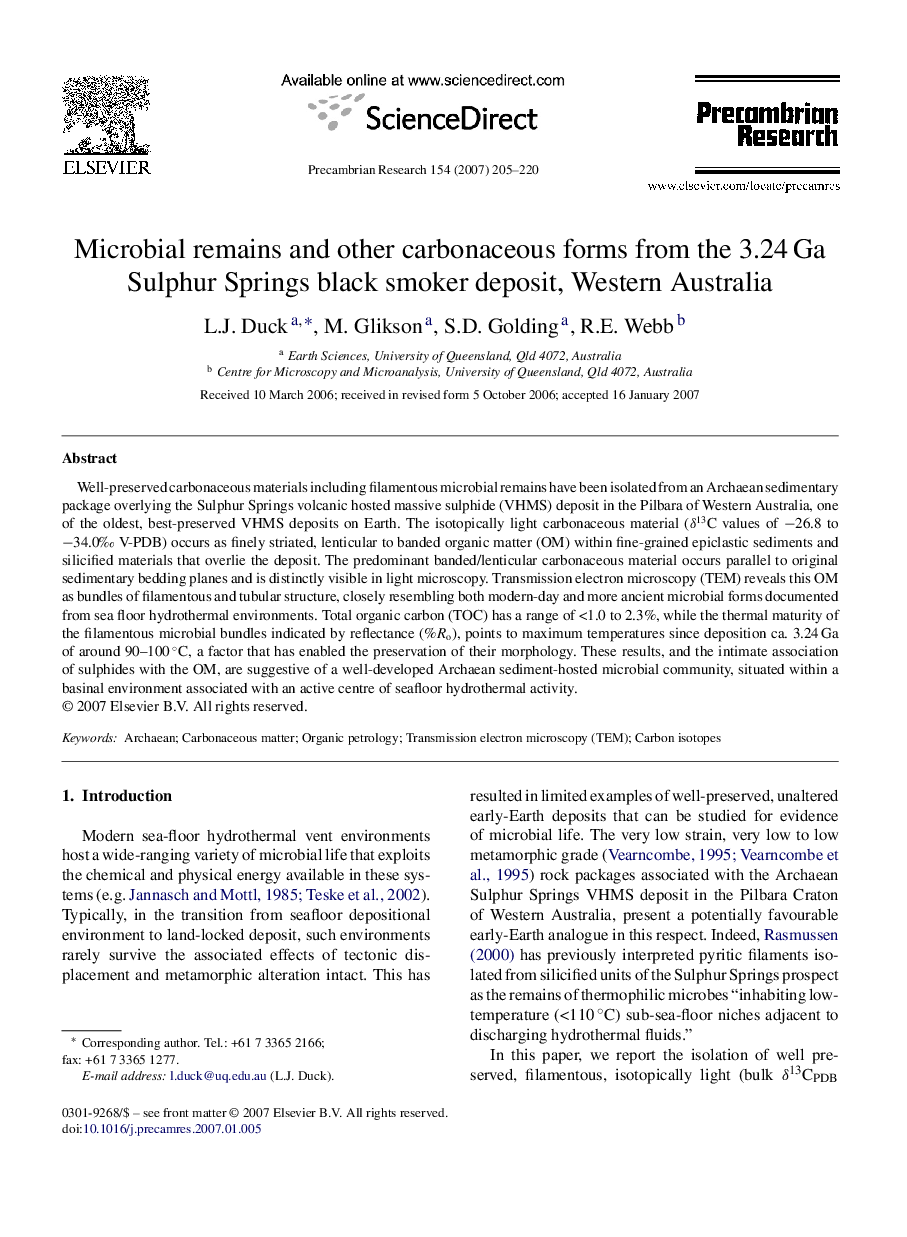| Article ID | Journal | Published Year | Pages | File Type |
|---|---|---|---|---|
| 4724540 | Precambrian Research | 2007 | 16 Pages |
Abstract
Well-preserved carbonaceous materials including filamentous microbial remains have been isolated from an Archaean sedimentary package overlying the Sulphur Springs volcanic hosted massive sulphide (VHMS) deposit in the Pilbara of Western Australia, one of the oldest, best-preserved VHMS deposits on Earth. The isotopically light carbonaceous material (δ13C values of â26.8 to â34.0â° V-PDB) occurs as finely striated, lenticular to banded organic matter (OM) within fine-grained epiclastic sediments and silicified materials that overlie the deposit. The predominant banded/lenticular carbonaceous material occurs parallel to original sedimentary bedding planes and is distinctly visible in light microscopy. Transmission electron microscopy (TEM) reveals this OM as bundles of filamentous and tubular structure, closely resembling both modern-day and more ancient microbial forms documented from sea floor hydrothermal environments. Total organic carbon (TOC) has a range of <1.0 to 2.3%, while the thermal maturity of the filamentous microbial bundles indicated by reflectance (%Ro), points to maximum temperatures since deposition ca. 3.24 Ga of around 90-100 °C, a factor that has enabled the preservation of their morphology. These results, and the intimate association of sulphides with the OM, are suggestive of a well-developed Archaean sediment-hosted microbial community, situated within a basinal environment associated with an active centre of seafloor hydrothermal activity.
Keywords
Related Topics
Physical Sciences and Engineering
Earth and Planetary Sciences
Geochemistry and Petrology
Authors
L.J. Duck, M. Glikson, S.D. Golding, R.E. Webb,
